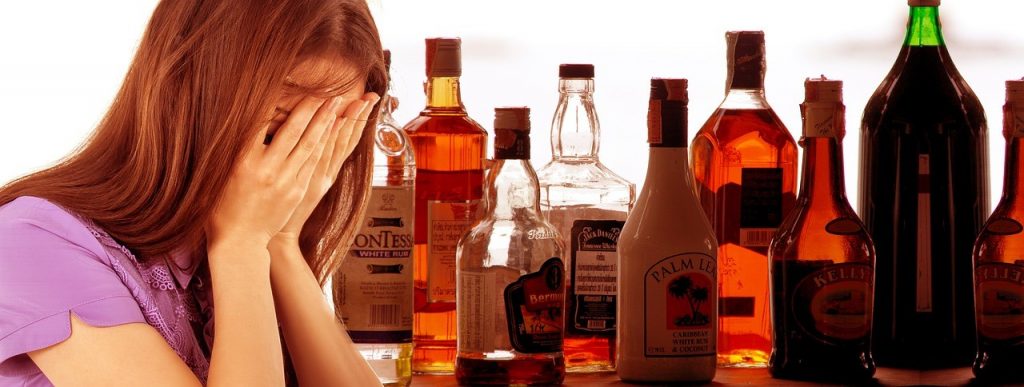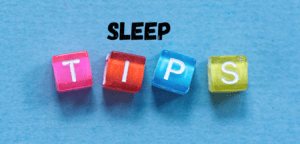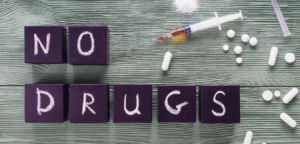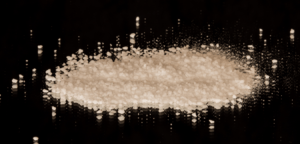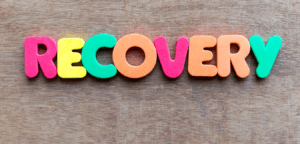Use of alcohol by individuals under the age of 21 is a significant health concern in the United States. Illicit use of alcohol by young people represents the most common form of substance abuse in children and teenagers, and it is an enormous safety and health risk for these individuals. The ramifications of underage alcohol use affects everyone in the country, whether individuals drink alcohol themselves or not. The issue is not merely a problem of the families who have children or teenagers who drink alcohol; it is a problem that concerns the entire nation.
Underage Drinking
The Substance Abuse and Mental Health Services Administration (SAMHSA) provides the most reliable estimates of alcohol use by young people in the United States.
- It is estimated that nearly one-third of teens have had one alcoholic drink by the age of 15.
- Nearly 60% of teens have had at least one alcoholic drink by the age of 18.
- In 2015, about 7.7 million young people between the ages of 12 and 20 reported that they used alcohol beyond having “just a few sips” within the month prior to the survey.
- It is estimated that approximately 11% of all the alcoholic beverages consumed in the United States are consumed by individuals between the ages of 12 and 20.
Young people are more likely to binge drink than adults. The American Psychiatric Association (APA) formally defines binge drinking as five or more drinks on a single occasion for males, and four or more drinks on a single occasion for females. The estimates are based on the amount of alcohol needed to achieve a blood alcohol concentration of 0.08% (the standard for intoxication in the United States) within a roughly two-hour period. However, age, gender, and body weight significantly affect this process, such that the number of drinks varies depending on gender and age. For males:
- It is estimated that for those 9-13 years old, about three drinks on a single occasion satisfies the above criteria.
- It is estimated that for those 13-15 years old, about four drinks satisfies the binge drinking criteria.
- It is estimated that beyond the age of 16, about five drinks satisfies the binge drinking criteria.
The general estimation for girls ages 9-17 is that consuming three drinks on the same occasion satisfies the requirements for binge drinking. Of course, there will be variations
due to factors like the individual’s weight, tolerance level, etc., but as can be seen by these figures, the standards for binge drinking differ for younger individuals.
According to data provided by SAMHSA, alcohol use and binge drinking increase as young people get older.
- About 5.1 million young individuals under the age of 20 reported binge drinking at least once in the month prior to the survey.
- About 1.3 million young people under the age of 20 reported binge drinking behaviour on five or more days over the month prior to the survey.
The Same but Different
It is important to understand how substance abuse and the substance use disorders present themselves in young people compared to adults. It is a mistaken notion to assume that children and adolescents are simply miniature versions of adults. Due to incomplete development of a child/adolescent’s brain, and the level of experience in individuals under the age of 21, they are different from adults across numerous factors.
On the other hand, it is equally wrong to assume that alcohol abuse or other substance abuse that occurs in children is totally qualitatively different than substance abuse in general. APA does not publish separate diagnostic criteria for substance use disorders for children and for adults. This is because the general signs of any form of substance abuse or substance use disorder are applicable across demographic variables. However, younger individuals may display the general signs and symptoms of certain disorders differently than adults. This is why many mental health professionals specialize in either child and adolescent treatment or adult treatment; the two groups require different approaches even though the general features of the approaches, and the signs and symptoms of their issues, are based on the same factors.
Because there is no objective medical test that can diagnose substance abuse or a substance use disorder in any person, it is up to licensed mental health clinicians to understand the behavioural signs and symptoms of a substance use disorder, such as alcohol abuse or alcohol use disorder. Thus, it can be safely said that the signs and symptoms of alcohol abuse in young people are the “same but different” as they are in adults.
Ramifications of Underage Alcohol Use
It should be clearly understood that use of alcohol by any individual under the age of 21 is a serious problem. In most states and local jurisdictions, use of alcohol by underage individuals is illegal, though there are a few exceptions.
The policy regarding underage alcohol use should be one of zero tolerance. Parents, older siblings, relatives, etc., who offer underage individuals alcohol at parties, social gatherings, etc., even if it is just a small sip, are simply adding to the complications associated with the use of alcohol in these individuals. The glorification or romanticizing of underage drinking and drug use that occurs in the media does nothing to address this serious issue. These types of behaviours simply idealize the use of alcohol in the minds of younger individuals. In order to combat the issues associated with underage alcohol consumption, there should be clear lines drawn regarding appropriate and inappropriate behaviour for individuals who are not legal adults.
The ramifications of underage drinking are serious. According to data provided by the Centers for Disease Control and Prevention (CDC) and SAMHSA, alcohol use is a significant factor in the deaths of many young people who are under the age of 21. In 2011, alcohol was related to over 4,300 deaths in individuals under the age of 21. Of these deaths, 1,580 occurred as a result of motor vehicle accidents; 1,269 occurred from homicides; 492 were the result of suicide; and 245 were due to other factors related to alcohol use, such as drowning, falling, alcohol poisoning, and burn injuries. Also in 2011, approximately 188,000 young people under the age of 21 were admitted to hospital emergency rooms as a result of alcohol-related injuries.
Alcohol abuse is problematic across all age groups, but alcohol abuse in younger individuals has some special ramifications.
- Significant impairments in reasoning and judgment occur in young people who drink. This is exacerbated in young individuals who are already unable to make “adult decisions” due to incomplete brain development and a lack of personal experience. The potential for risky behaviours and accidents is increased in younger individuals.
- There is increased risk of being physically or sexually assaulted among young individuals who abuse alcohol.
- Beginning regular use of alcohol at an early age results in a significantly increased risk to have a diagnosis of an alcohol use disorder later in life. Some research studies suggest that individuals who begin drinking alcohol at the age of 15 are four times more likely to have these issues.
- Alcohol use interferes with the development of an individual’s central nervous system. Even in individuals over the age of 16, there are key areas of the brain that have not been fully developed, particularly in the frontal lobe and in white matter. Alcohol use interferes with brain development, and if this interference is significant, it may not be corrected with abstinence.
- Alcohol use at an early age is associated with other forms of drug use and abuse.
- Alcohol use at an early age can result in legal issues that may follow an individual over their lifetime.
- Alcohol use at an early age interferes with an individual’s academic development.
Reasons for Alcohol Use
As they grow up, children often try to assert their independence and establish their identity. They try to do this in manners that challenge authority, particularly the close authority figures they have followed most of their lives, such as teachers and parents. Use of alcohol is one way to challenge this authority, but children and adolescents do not fully understand the risks on their health and behaviour.
According to APA, SAMHSA, and the CDC, there are other reasons that younger individuals may try alcohol.
- SAMHSA reported that young people between the ages of 12 and 14 who had reported they had used alcohol within the month prior to their survey got it for free from friends or family members, or found it in the house. Easy access to alcohol increases its potential for use and abuse.
- Peer pressure or conformity to peer behaviour is a significant reason that many younger individuals use alcohol.
- Stress reduction is a common reason that many younger individuals begin and continue to use alcohol.
- Learning by association is a common reason that many individuals under the age of 21 begin drinking alcohol. They observe their peers, family, and other adults drinking alcohol to feel good or reduce stress, and they attempt to drink for the same reasons.
Signs of Teenage Alcoholism
In addition, APA designates some general factors that increase the risk of alcohol use and abuse, which apply to younger individuals.
- A family history of alcohol use and abuse is a significant risk factor for alcohol use and abuse in any individual. This combines both genetic and learning factors.
- The specific rate of an individual’s maturation may affect their risk for alcohol use. Younger people who mature physically at an early age may be at an increased risk.
- Availability of alcohol is always a significant factor that contributes to alcohol use in young people. Young people living in environments where alcohol is readily available are more likely to try it.
- Co-occurring mental health disorders or a history of trauma and stress in childhood increase the risk for substance abuse of any type. Alcohol is often readily available and one of the first substances these individuals turn to.
- Social factors, such as an individual’s socioeconomic status, living conditions, and attitude toward substance abuse, can increase the risk to engage in alcohol use and abuse.
The formal diagnosis of an alcohol use disorder in anyone can only be made by a licensed mental health clinician. The diagnostic criteria used to formally diagnose an alcohol use disorder are generally applicable across demographic factors; however, according to the book Underage Drinking: Examining and Preventing Youth Use of Alcohol, there are some signs of alcohol use and abuse that apply to younger individuals. These include:
- The onset of uncharacteristic problems at school, such as behavioural problems or a drop in grades
- Increasing rebelliousness
- Mood changes, particularly issues with depression, irritability, and anger
- Uncharacteristic periods of lethargy and low energy
- A change in one’s peer group
- A decline in self-care
- Periodic issues with attention and memory that seem uncharacteristic for the person
- Signs that the person is using alcohol that is found in the home, such as missing containers of alcohol, diluted spirits, or significant reductions in the volume of alcoholic beverages around the house
- Finding empty alcohol containers on the person or in their room.
- Physical signs, such as issues with motor coordination, slurred speech, giddiness, silly behaviours, etc.
Treatment and Prevention
Treatment of an alcohol abuse issue in a younger individual requires a program that follows the same general outline as treatment for alcohol use disorders in general, but is tailored for young people. There are some specialized considerations that should be made and implemented for younger individuals regarding the prevention of alcohol use, some of these considerations include:
- Macro level interventions that include things like as enacting zero-tolerance laws for alcohol use in younger individuals, stronger sanctions for individuals who provide alcohol to younger people, making alcohol harder to get for younger people, and reducing the positive image of alcohol use by younger individuals in the media and other sources
- School-based interventions that provide students with an understanding of the risks associated with using alcohol and why they need to abstain from its use
- Family-based interventions that include setting and enforcing clear rules regarding alcohol use, and older family members practicing what they preach when it comes to drinking
Parents and the child’s teachers are instrumental in affecting the child’s attitude, particularly at a younger age. Parents especially can have a positive influence on their child. Instead of being passive, parents should take an active role by:
- Discussing the dangers of alcohol use with their children periodically
- Drinking alcohol in a responsible manner themselves
- Making sure that open alcohol is not available in the home
- Supervising parties or requiring adult supervision at all parties the child attends
- Getting to know their child’s peers
- Encouraging children to participate in positive activities that do not include the use of alcoholic beverages, such as sports, academic activities, etc.
- Having periodic talks with their child about life issues in general
- Spending quality time with their children and being involved in activities with them
- Being a positive role model for their children
- Setting limits without being overly demanding and restrictive
The research is very clear that the risk of alcohol use in children is significantly decreased for those with parents who are actively involved in their lives, and that the children of parents who binge drink or use alcohol excessively are more likely to use alcohol themselves. Prevention of alcohol abuse in younger individuals starts at home.
Credited to: Alcoholic.Org

